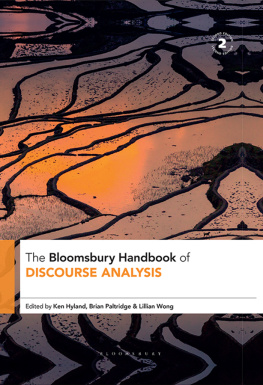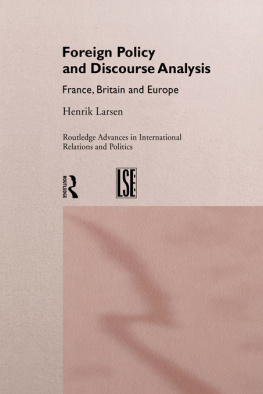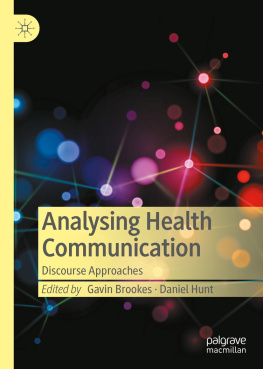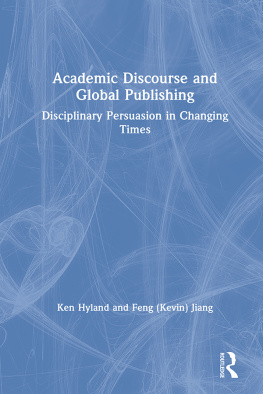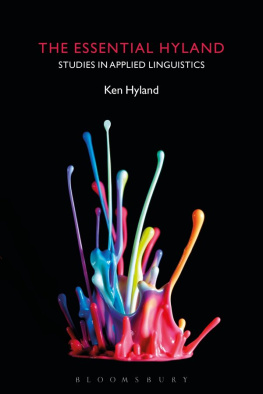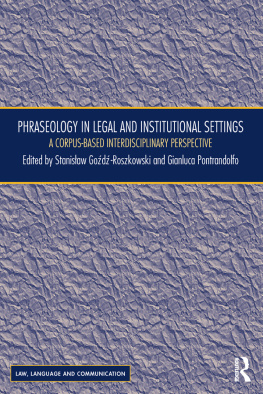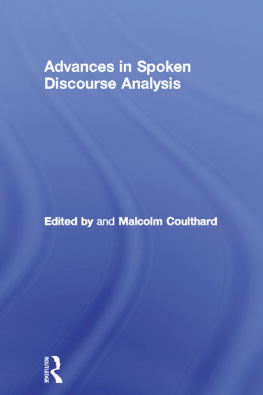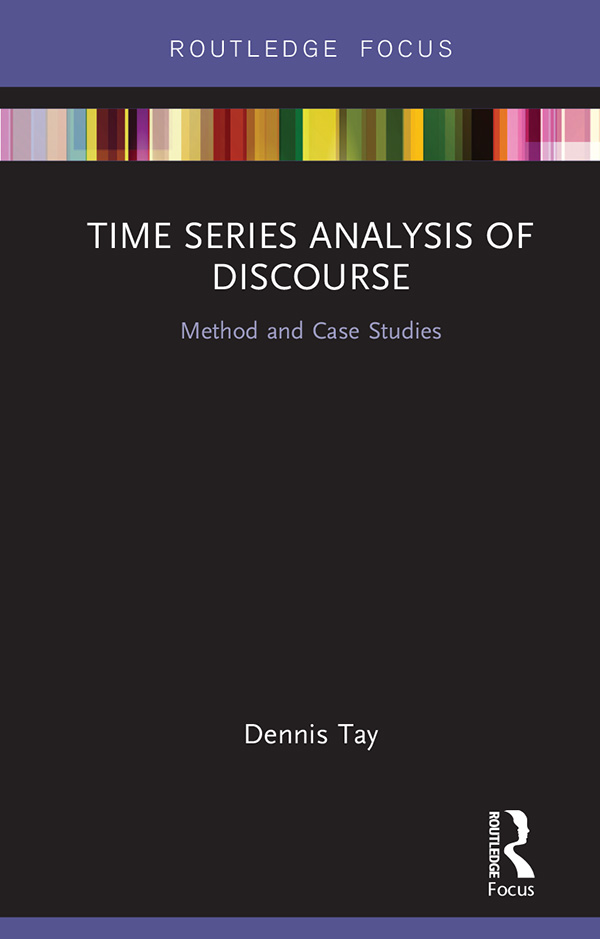Contents
Time Series Analysis of Discourse
This volume serves as a comprehensive introduction to time series analysis (TSA), used commonly in financial and engineering sciences, to demonstrate its potential to complement qualitative approaches in discourse analysis research. The book begins by discussing how time has previously been conceptualized in the literature, drawing on studies from variationist sociolinguistics, corpus linguistics and critical discourse analysis. The volume then segues into a discussion of how TSA is applied in other contexts in which observed values are expected to be dependent on earlier values, such as stock markets and sales figures, and introduces a range of discourse-specific contexts to show how the technique might be extended to analyze trends or shed further light on relevant themes in discourse over time. Each successive chapter features a different discourse context as a case study, from psychotherapy sessions to university lectures and news articles and looks at how studying different variables over time in each context metaphors, involvement markers, and keywords, respectively can contribute to a greater understanding of both present and future discourse activity in these settings. Taken together, this book highlights the value of TSA as a complementary approach to meaning-based analysis in discourse, making this ideal reading for graduate students and scholars in discourse analysis looking to employ quantitative methods in their research practice.
Dennis Tay is an Associate Professor in the Department of English, The Hong Kong Polytechnic University. His research interests include cognitive linguistics, discourse analysis, mental healthcare communication and the statistical modeling of discourse.
Routledge Studies in Linguistics
12 Relational Semantics and the Anatomy of Abstraction
Tamar Sovran
13 Language Contact and the Origins of the Germanic Languages
Peter Schrijver
14 Metonymy and Language
A New Theory of Linguistic Processing
Charles Denroche
15 A Forensic Linguistic Approach to Legal Disclosures
ERISA Cash Balance Conversion Cases and the Contextual Dynamics of Deception
James F. Stratman
16 Conceptual Conflicts in Metaphors and Figurative Language
Michele Prandi
17 The Language of Pop Culture
Edited by Valentin Werner
18 Perspectives from Systemic Functional Linguistics
Edited by Akila Sellami-Baklouti and Lise Fontaine
19 Time Series Analysis of Discourse
Method and Case Studies
Dennis Tay
For more information about this series, please visit: https://www.routledge.com/Routledge-Studies-in-Linguistics/book-series/SE0719
Time Series Analysis of Discourse
Method and Case Studies
Dennis Tay

First published 2019
by Routledge
2 Park Square, Milton Park, Abingdon, Oxon OX14 4RN
and by Routledge
52 Vanderbilt Avenue, New York, NY 10017
Routledge is an imprint of the Taylor & Francis Group, an informa business
2019 Taylor & Francis
The right of Dennis Tay to be identified as author of this work has been asserted by him in accordance with sections 77 and 78 of the Copyright, Designs and Patents Act 1988.
All rights reserved. No part of this book may be reprinted or reproduced or utilised in any form or by any electronic, mechanical, or other means, now known or hereafter invented, including photocopying and recording, or in any information storage or retrieval system, without permission in writing from the publishers.
Trademark notice: Product or corporate names may be trademarks or registered trademarks, and are used only for identification and explanation without intent to infringe.
Library of Congress Cataloging-in-Publication Data
A catalog record has been requested for this book
ISBN: 978-1-138-58463-1 (hbk)
ISBN: 978-0-429-50588-1 (ebk)
Typeset in Times New Roman
by codeMantra
Contents
What is discourse analysis?
Language is often researched at two broad levels. The first level lies within the sentence and describes the more stable rules and properties of a language such as its speech sounds, word meanings and grammar. The second level is about how people use language to achieve various objectives in everyday life. The study of pragmatics, for example, considers how usage contexts contribute to meaning. Another closely related area is the study of discourse. In general, discourse research goes beyond the sentence to examine the dynamic ways in which language influences and gets influenced by various aspects of social life. There are many examples of basic linguistic building tasks (Gee, 2005) to create everyday social reality such as the enactment of activities, construction of identities and establishment of connections between people and objects. They are manifest in a diverse range of contemporary settings from newspaper articles to social media, and doctorpatient communication to university lectures. The forms and structures of discourse that enable and are shaped by these tasks are likewise diverse. A cursory list of widely studied examples includes anaphora, coherence, speech acts, turn-taking, topics, syntactic structures, politeness, metaphor, rhetoric and so on (Van Dijk, 2011). Some discourse analysts limit themselves to documenting and describing these phenomena and their functions, while others take a more critical approach to explore how language is linked to wider sociopolitical issues like sexism, racism and environmentalism. The advent of new media technologies that enable multiple and often simultaneous modes of meaning making such as images, film and music has also significantly expanded the scope and complexity of discourse research (Bateman, 2014; OHalloran, 2011). Painting an integrated picture of the multiple branching pathways of discourse research has itself proven to be a challenging endeavor (Johnstone, 2008; Van Dijk, 2011; Wetherell, Taylor, & Yates, 2001).
Nevertheless, we can venture to say with some risk of oversimplification that the basic objective of much of discourse research is to understand the relationship between two conceptually independent things. One of these things is the observed forms, structures and functions of discourse, and the other is the social context of their occurrence. An important aspect of this relationship is how discourse and society change with the passage of time. Consider how social processes evolve over different time scales. Attitudes toward a conversational partner can shift in a matter of seconds or less, while the formation and shaping of political ideologies often take decades and even centuries. The big question frequently asked by discourse analysts is how these changes are mirrored in corresponding shifts in language use, or how language and discourse change might itself be responsible for triggering social change. Therefore, there has always been at least a trace of a chronological or diachronic perspective across the numerous varieties of discourse analysis. I begin by giving a brief overview of this chronological perspective in three major discourse-related research approaches variationist sociolinguistics, corpus-assisted discourse studies and critical discourse analysis (CDA). Research falling under these approaches overlaps in terms of foci and methodologies, and collectively illustrates the many advances that have been made in our attempt to understand discourse across time. Besides pointing out these advances, the more important present purpose is to highlight several limitations and issues with this body of work. The discussion eventually leads to the introduction of the subject matter of this book, the complementary methodology of time series analysis (TSA).


